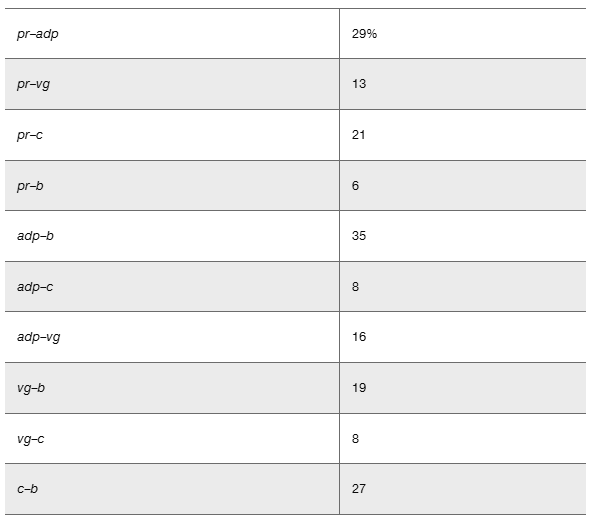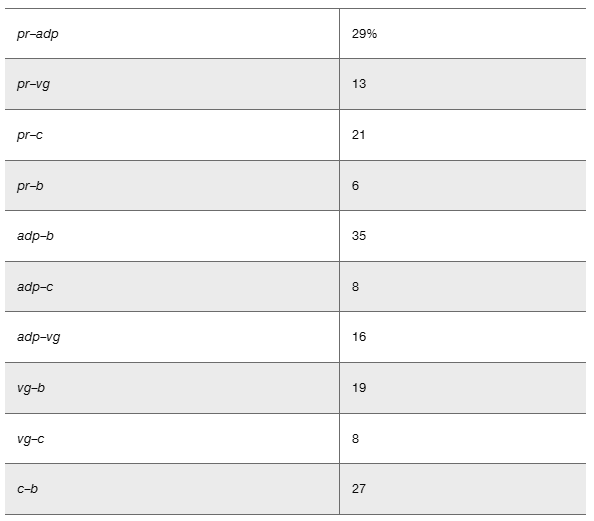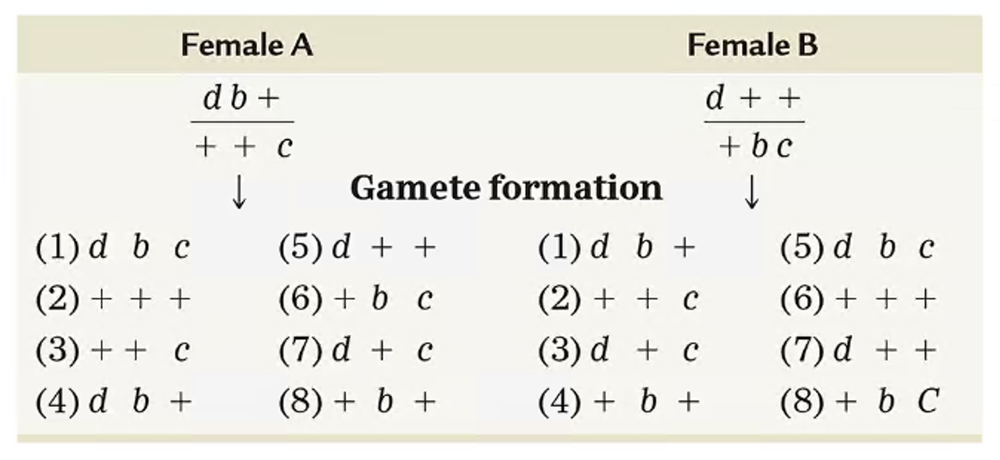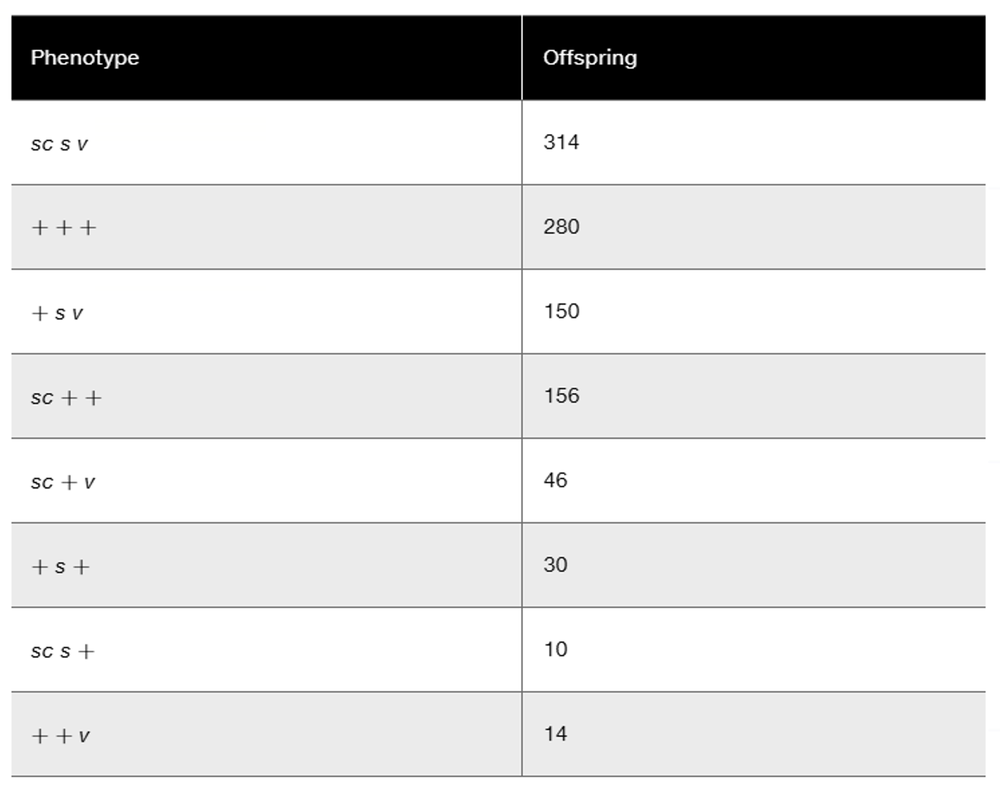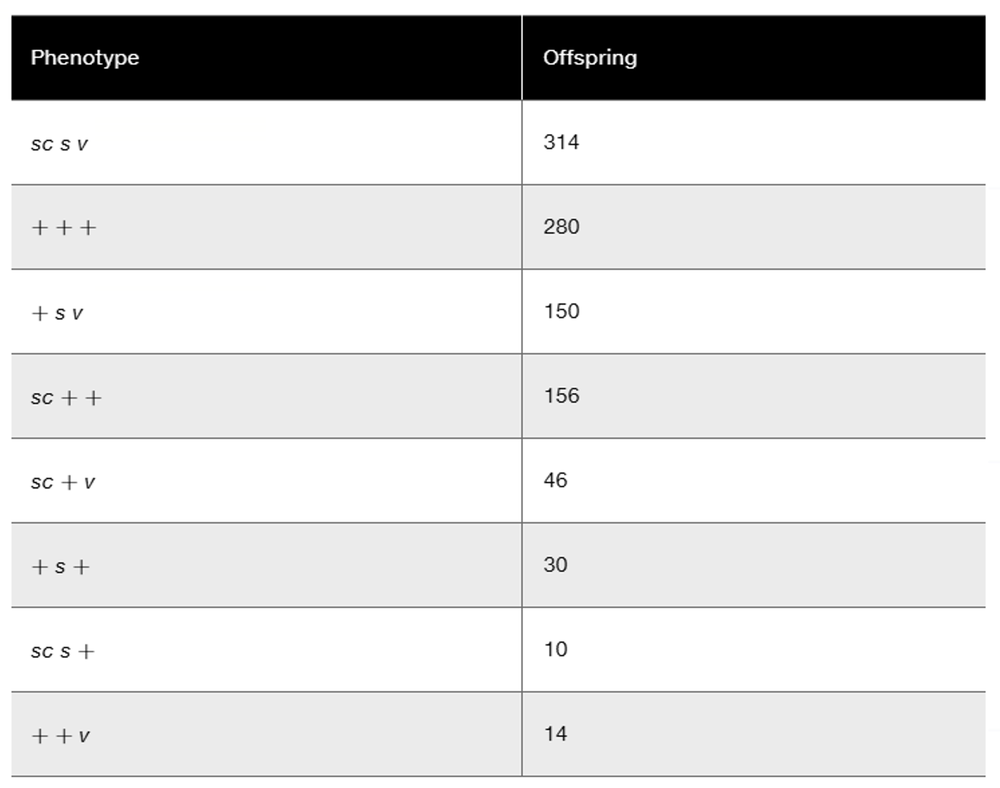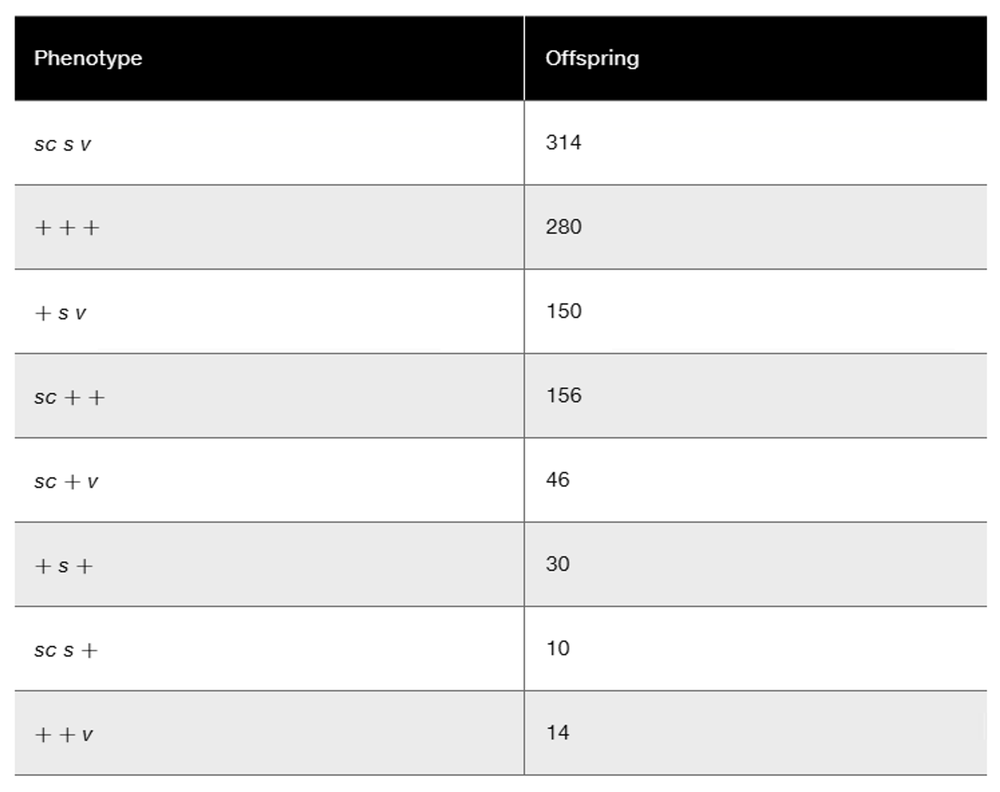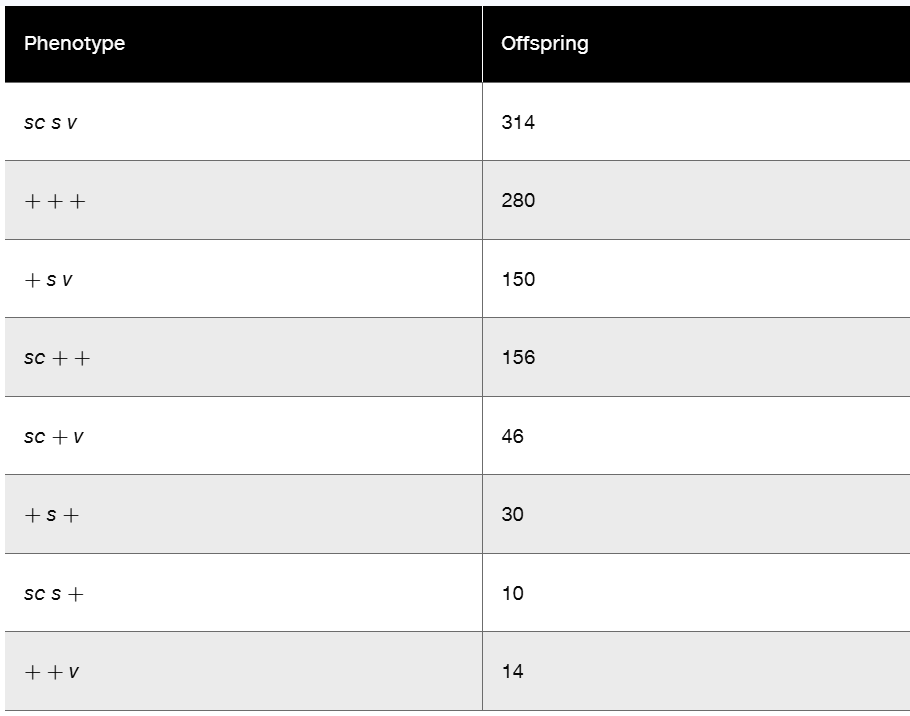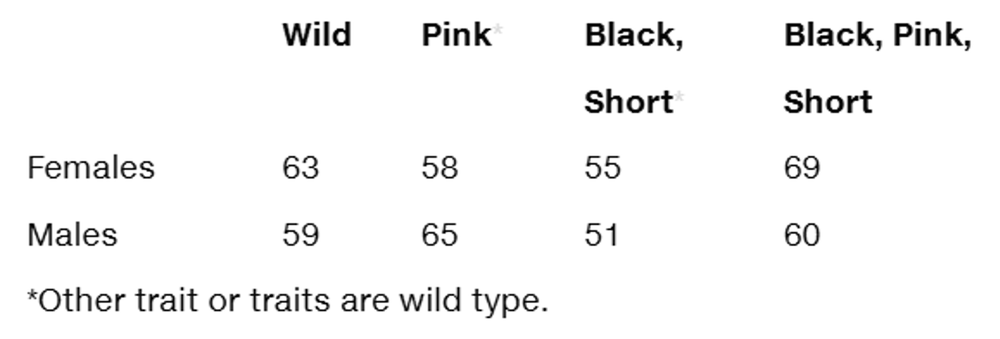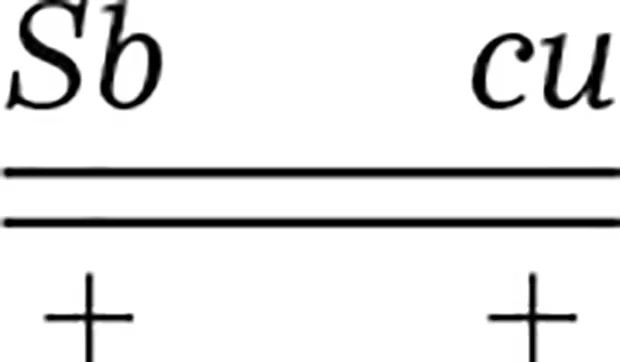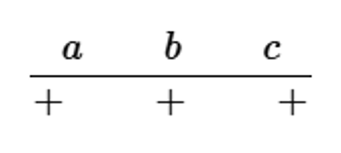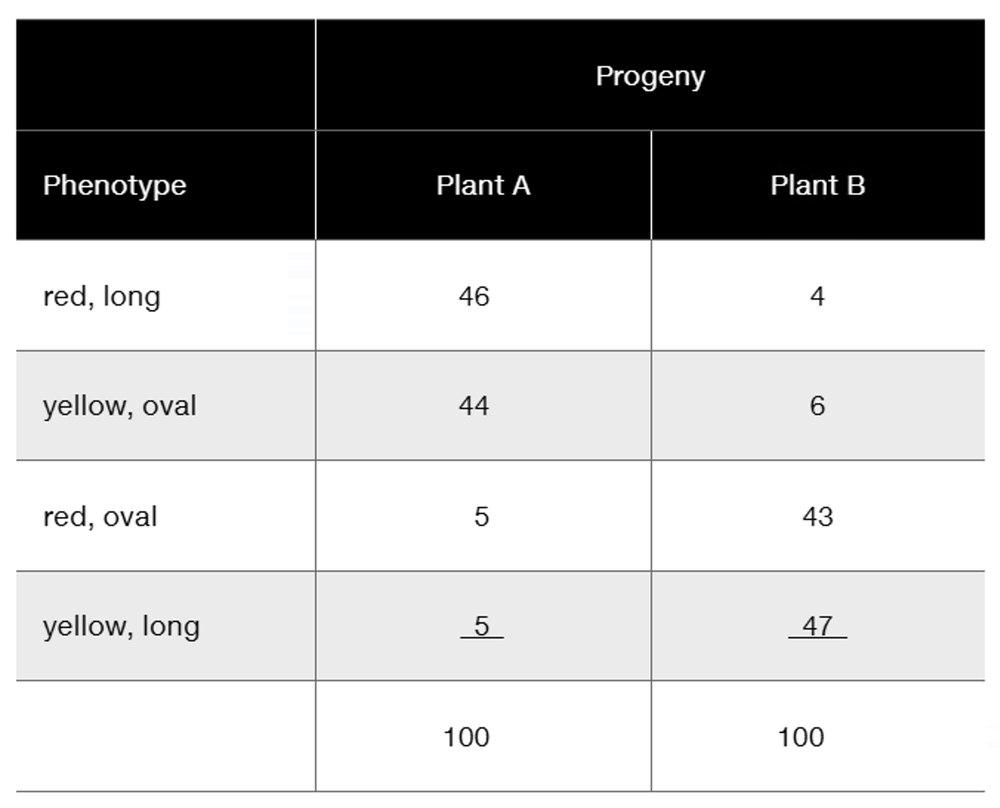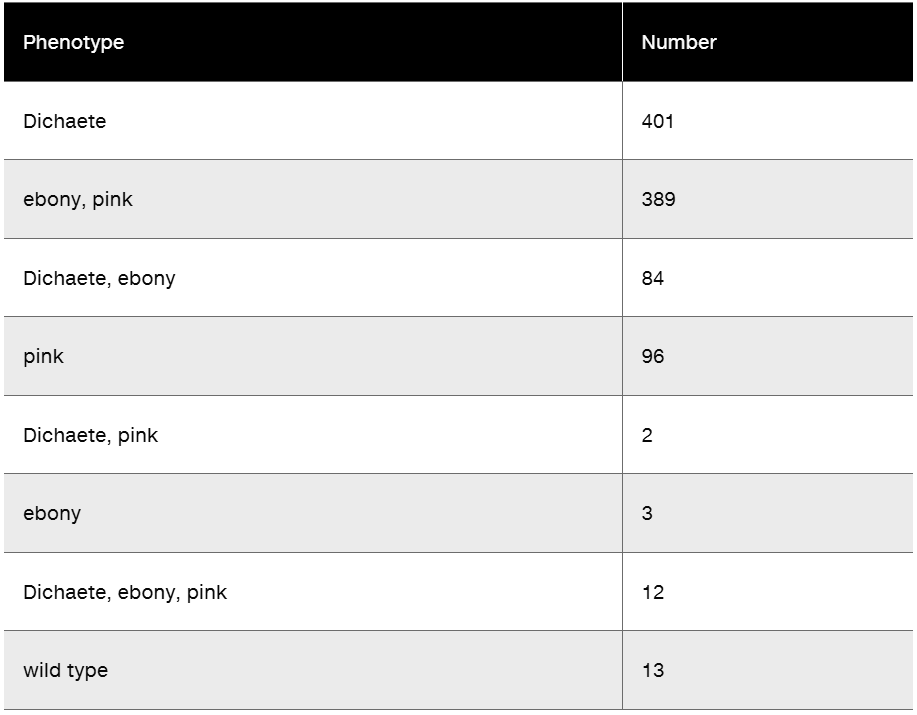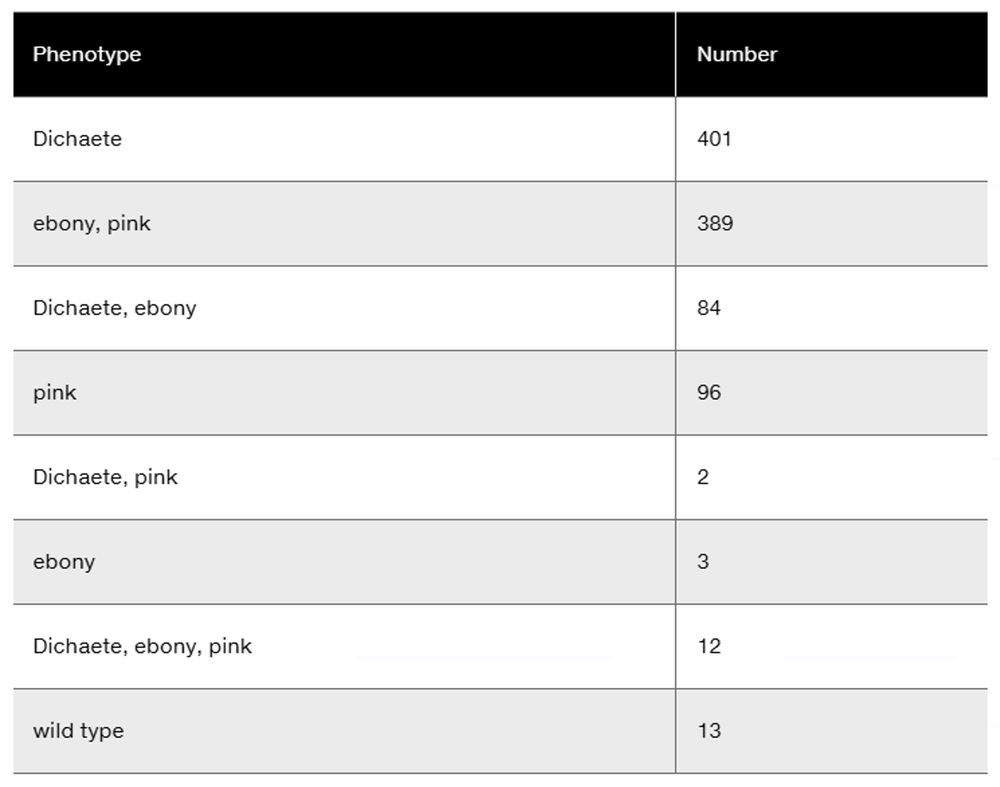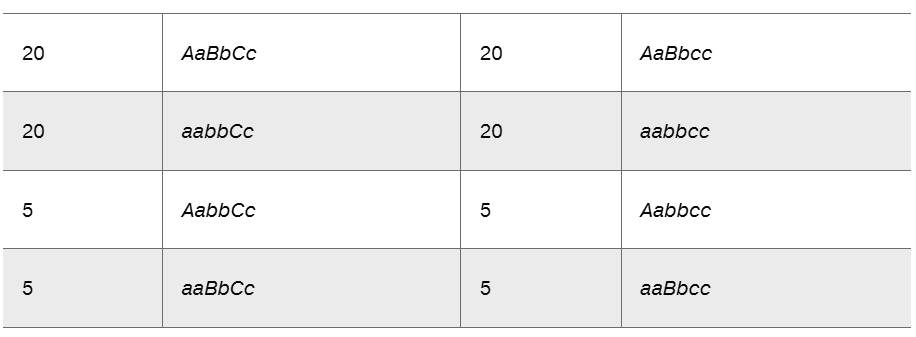 Back
BackProblem 1a
How was it established experimentally that the frequency of recombination (crossing over) between two genes is related to the distance between them along the chromosome?
Problem 1b
How do we know that specific genes are linked on a single chromosome, in contrast to being located on separate chromosomes?
Problem 1c
How do we know that crossing over results from a physical exchange between chromatids?
Problem 1d
How do we know that sister chromatids undergo recombination during mitosis?
Problem 2
Write a short essay that discusses how crossing over can be detected and how the resultant data provide the basis of chromosome mapping.
Problem 3
Describe the cytological observation that suggests that crossing over occurs during the first meiotic prophase.
Problem 4
Why does more crossing over occur between two distantly linked genes than between two genes that are very close together on the same chromosome?
Problem 5
Explain why a 50 percent recovery of single-crossover products is the upper limit, even when crossing over always occurs between two linked genes?
Problem 6
Why are double-crossover events expected less frequently than single-crossover events?
Problem 7
What is the proposed basis for positive interference?
Problem 8
What two essential criteria must be met in order to execute a successful mapping cross?
Problem 9
The genes dumpy (dp), clot (cl), and apterous (ap) are linked on chromosome II of Drosophila. In a series of two-point mapping crosses, the following genetic distances were determined. What is the sequence of the three genes?
dp–ap: 42
dp–cl: 3
ap–cl: 39
Problem 10
Colored aleurone in the kernels of corn is due to the dominant allele R. The recessive allele r, when homozygous, produces colorless aleurone. The plant color (not the kernel color) is controlled by another gene with two alleles, Y and y. The dominant Y allele results in green color, whereas the homozygous presence of the recessive y allele causes the plant to appear yellow. In a testcross between a plant of unknown genotype and phenotype and a plant that is homozygous recessive for both traits, the following progeny were obtained:
colored, green: 88
colored, yellow: 12
colorless, green: 8
colorless, yellow: 92
Explain how these results were obtained by determining the exact genotype and phenotype of the unknown plant, including the precise arrangement of the alleles on the homologs.
Problem 11
In the cross shown here, involving two linked genes, ebony (e) and claret (ca), in Drosophila, where crossing over does not occur in males, offspring were produced in a 2 + : 1 ca : 1 e phenotypic ratio:
These genes are 30 units apart on chromosome III. What did crossing over in the female contribute to these phenotypes?
Problem 12a
In a series of two-point mapping crosses involving five genes located on chromosome II in Drosophila, the following recombinant (single-crossover) frequencies were observed:
Given that the adp gene is near the end of chromosome II (locus 83), construct a map of these genes.
Problem 12b
In a series of two-point mapping crosses involving five genes located on chromosome II in Drosophila, the following recombinant (single-crossover) frequencies were observed:
In another set of experiments, a sixth gene, d, was tested against b and pr:
Predict the results of two-point mapping between d and c, d and vg, and d and adp.
Problem 13
Two different female Drosophila were isolated, each heterozygous for the autosomally linked genes b (black body), d (dachs tarsus), and c (curved wings). These genes are in the order d–b–c, with b being closer to d than to c. Shown here is the genotypic arrangement for each female along with the various gametes formed by both:
Identify which categories are noncrossovers (NCOs), single crossovers (SCOs), and double crossovers (DCOs) in each case. Then, indicate the relative frequency in which each will be produced.
Problem 14a
In Drosophila, a cross was made between females—all expressing the three X-linked recessive traits scute bristles (sc), sable body (s), and vermilion eyes (v)—and wild-type males. In the F1, all females were wild type, while all males expressed all three mutant traits. The cross was carried to the F2 generation, and 1000 offspring were counted, with the results shown in the following table.
No determination of sex was made in the data.
Using proper nomenclature, determine the genotypes of the P1 and F1 parents.
Problem 14b
In Drosophila, a cross was made between females—all expressing the three X-linked recessive traits scute bristles (sc), sable body (s), and vermilion eyes (v)—and wild-type males. In the F1, all females were wild type, while all males expressed all three mutant traits. The cross was carried to the F2 generation, and 1000 offspring were counted, with the results shown in the following table.
No determination of sex was made in the data.
Determine the sequence of the three genes and the map distances between them.
Problem 14c
In Drosophila, a cross was made between females—all expressing the three X-linked recessive traits scute bristles (sc), sable body (s), and vermilion eyes (v)—and wild-type males. In the F1, all females were wild type, while all males expressed all three mutant traits. The cross was carried to the F2 generation, and 1000 offspring were counted, with the results shown in the following table.
No determination of sex was made in the data.
Are there more or fewer double crossovers than expected?
Problem 14d
In Drosophila, a cross was made between females, all expressing the three X-linked recessive traits scute bristles (sc), sable body (s), and vermilion eyes (v)—and wild-type males. In the F₁, all females were wild type, while all males expressed all three mutant traits. The cross was carried to the F₂ generation, and 1000 offspring were counted, with the results shown in the following table.
No determination of sex was made in the data. Calculate the coefficient of coincidence. Does it represent positive or negative interference?
Problem 15a
Drosophila melanogaster has one pair of sex chromosomes (XX or XY) and three pairs of autosomes, referred to as chromosomes II, III, and IV. A genetics student discovered a male fly with very short (sh) legs. Using this male, the student was able to establish a pure breeding stock of this mutant and found that it was recessive. She then incorporated the mutant into a stock containing the recessive gene black (b, body color located on chromosome II) and the recessive gene pink (p, eye color located on chromosome III). A female from the homozygous black, pink, short stock was then mated to a wild-type male. The F1 males of this cross were all wild type and were then backcrossed to the homozygous b, p, sh females. The F2 results appeared as shown in the following table. No other phenotypes were observed.
Based on these results, the student was able to assign short to a linkage group (a chromosome). Which one was it? Include your step-by-step reasoning.
Problem 15b
Drosophila melanogaster has one pair of sex chromosomes (XX or XY) and three pairs of autosomes, referred to as chromosomes II, III, and IV. A genetics student discovered a male fly with very short (sh) legs. Using this male, the student was able to establish a pure breeding stock of this mutant and found that it was recessive. She then incorporated the mutant into a stock containing the recessive gene black (b, body color located on chromosome II) and the recessive gene pink (p, eye color located on chromosome III). A female from the homozygous black, pink, short stock was then mated to a wild-type male. The F₁ males of this cross were all wild type and were then backcrossed to the homozygous b, p, sh females. The F₂ results appeared as shown in the following table.
The student repeated the experiment, making the reciprocal cross, with F₁ females backcrossed to homozygous b, p, sh males. She observed that 85 percent of the offspring fell into the given classes, but that 15 percent of the offspring were equally divided among b + p, b + +, + sh p, and + sh + phenotypic males and females. How can these results be explained, and what information can be derived from the data?
Problem 16
Drosophila females homozygous for the third chromosomal genes pink and ebony (the same genes from Problem 16) were crossed with males homozygous for the second chromosomal gene dumpy. Because these genes are recessive, all offspring were wild type (normal). F1 females were testcrossed to triply recessive males. If we assume that the two linked genes, pink and ebony, are 20 mu apart, predict the results of this cross. If the reciprocal cross were made (F1 males—where no crossing over occurs—with triply recessive females), how would the results vary, if at all?
Problem 17
In Drosophila, two mutations, Stubble (Sb) and curled (cu), are linked on chromosome III. Stubble is a dominant gene that is lethal in a homozygous state, and curled is a recessive gene. If a female of the genotype
is to be mated to detect recombinants among her offspring, what male genotype would you choose as a mate?
Problem 18
A female of genotype
produces 100 meiotic tetrads. Of these, 68 show no crossover events. Of the remaining 32, 20 show a crossover between a and b, 10 show a crossover between b and c, and 2 show a double crossover between a and b and between b and c. Of the 400 gametes produced, how many of each of the 8 different genotypes will be produced? Assuming the order a–b–c and the allele arrangement previously shown, what is the map distance between these loci?
Problem 19
In a certain plant, fruit is either red or yellow, and fruit shape is either oval or long. Red and oval are the dominant traits. Two plants, both heterozygous for these traits, were testcrossed, with the following results.
Determine the location of the genes relative to one another and the genotypes of the two parental plants.
Problem 20a
In Drosophila, Dichaete (D) is a mutation on chromosome III with a dominant effect on wing shape. It is lethal when homozygous. The genes ebony body (e) and pink eye (p) are recessive mutations on chromosome III. Flies from a Dichaete stock were crossed to homozygous ebony, pink flies, and the F₁ progeny, with a Dichaete phenotype, were backcrossed to the ebony, pink homozygotes. Using the results of this backcross shown in the table.
Diagram this cross, showing the genotypes of the parents and offspring of both crosses.
Problem 20b
In Drosophila, Dichaete (D) is a mutation on chromosome III with a dominant effect on wing shape. It is lethal when homozygous. The genes ebony body (e) and pink eye (p) are recessive mutations on chromosome III. Flies from a Dichaete stock were crossed to homozygous ebony, pink flies, and the F1 progeny, with a Dichaete phenotype, were backcrossed to the ebony, pink homozygotes. Using the results of this backcross shown in the table,
What is the sequence and interlocus distance between these three genes?
Problem 21a
An organism of the genotype AaBbCc was testcrossed to a triply recessive organism (aabbcc). The genotypes of the progeny are presented in the following table.
If these three genes were all assorting independently, how many genotypic and phenotypic classes would result in the offspring, and in what proportion, assuming simple dominance and recessiveness in each gene pair?


